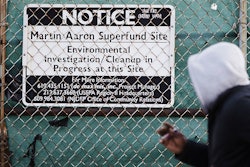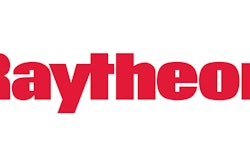Teamwork makes the dream work, whether you’re talking about the best basketball team in the nation or protecting your food processing facility from pests.
Think about it like this: you’ve signed up for a basketball tournament, and the winners get free food for a year. Are you going to show up to the tournament by yourself ready to fight against all odds to try to win? No. You’re going to take a team of the most qualified players you can find.
The same goes for your pest management program. The “players” in this case are all of your employees, as they’re the most likely to spot pest issues early. It’s imperative that they know about your pest management program so they can help detect and report pest problems, which, in turn, will help you quickly resolve issues to help protect your products and the bottom line.
With Food Safety Modernization Act (FSMA) regulations in full effect, you have to play active defense to protect food products from contamination, and a key way to do that is through staff training and rigorous sanitation. Being proactive is a big part of that, and it will help ensure that you’re audit-ready at a moment’s notice. After all, pest management can count for up to 20 percent of an audit score.
Chances are, you already have an Integrated Pest Management (IPM) program. But how familiar are your employees with the pests plaguing your facility? Do you think they would be able to identify a stored product pest? Or would anybody in your facility know the telltale signs of rodents?
Staff training will help to get everybody on the same page, and most pest management companies will offer complimentary training sessions with an ongoing contract. Before you start, schedule a meeting with your pest management professional to discuss the zones around your facility with pest issues. Make note of the high-risk areas, because employees working in those areas on a daily basis should be made aware that they’re the front line of defense in the battle against pests.
So, what’s the best way to proceed with staff training? Follow these simple steps, and you’ll be on the right track.
Start Simple
First and foremost, make sure employees understand your IPM program and how it works to prevent pests. If there are monitoring devices in the facility, employees should be made aware of what they are and their purpose. That said, it never hurts to walk them through all the tactics at your facility to help them comprehend the scale and importance of the program.
Sanitation is a big part of preventing pests, so make sure to emphasize the importance of regularly cleaning equipment and common areas. While it’s impossible to clean up every particle of food, try to limit the amount and access pests have to a food source. The less there is, the harder pests have to work for it. Any areas where food particles or moisture collect are attractive to pests, who are constantly in search of food, water and shelter.
Here are a few examples of some sanitation strategies you can implement today:
- Remove waste from bins on a daily basis and keep lids on bins closed at all times. Odors and organic waste will draw pests in.
- Create a sanitation schedule for regular cleanings. This includes daily, weekly, monthly, and shutdown tasks to try to address every area of the facility. While production and storage areas should be a high priority, don’t forget about employee areas like break rooms and locker rooms.
- Don’t forget the outside of the facility. Make sure dumpsters are emptied regularly and not overflowing. Many pest issues start on the outside and it’s a short run from there to the building.
Exclusion is also important, and all employees can assist on that as well. Remind everyone that rodents need an entry point the size of a dime or quarter while insects are tiny and need just a tiny opening to get through.
Pest-Sighting Protocol
Once employees know the basics of what to look for, they need to know what to do when they see something. That’s where a pest-sighting log comes into play. Many pests can reproduce quickly and spread dangerous, disease-inducing pathogens that can make employees sick and contaminate product, so sightings should be reported immediately.
The sighting log should be easy for employees to fill out and include the following details.
- What was seen — was it the pest, evidence of a pest or a condition (like a broken door seal) that could lead to pests?
- When, where and how many pests were seen. Employees should treat it almost like a crime scene, where every detail helps paint a clearer picture of what’s going on behind the scenes. Let employees know to record as much relevant information as possible.
- If pictures are allowed, a photo of the pest or issue. Or — even better — a captured pest in a sealable bag or other container. It’s tough for a pest management professional to correctly identify a pest if they can’t see it themselves, as there are numerous species.
No matter how strong the IPM program, pests may still find their way inside the facility. They’re determined, resilient and able to fit through tiny gaps. Employees need to be part of the plan.
Communicate Constantly
There isn’t a team in the world that can operate effectively without communicating. Make sure employees know who to go to when they see pests or pest issues. Keep employees informed of changes such as adjustments to the sanitation schedule, maintenance projects and new pest issues.
Communicate with your pest management professional to review the monitoring and trend reports, as well as the pest sighting log. You’ll be able to start seeing patterns and be able to start predicting what may be developing. Make sure the team understands the annual facility assessment and what it means for the next season. Communication also includes documentation, so keep writing down everything and ensure all documents are up to date.
Switch Up Your Game plan
Things are always changing, and your IPM plan should reflect that. Consider factors such as new construction/modifications to the facility, new equipment and even new products which could mean a different set of pest pressures. Use trend reports and the annual assessment to reevaluate what’s been going on and how to respond to any changes to combat any new pest issues.
Once you have everyone on the team working together, you’ve got a winning strategy. Start with a good IPM game plan, educate your employees and set them up for success with all the right tools (sanitation schedules, pest sighting logs, etc.), make changes to the plan as necessary and drive home the message that everyone has a part to play, and that it’s a partnership between the pest management professional and all employees at the facility.
Chelle Hartzer is Technical Services Manager for Orkin.























